High-Efficiency and Low-Damage Lapping Process Optimization
Abstract
:1. Introduction
2. Model and Basic Equation
2.1. Remove Rate Model and Subsurface Defect Model
2.2. ERRD Model
3. Simulations
- (1)
- Abrasive
- (2)
- Pressure
- (3)
- Velocity
4. Experimental Validation
- (1)
- Validation of simulation parameters
- (2)
- Validation of rough and fine lapping process.
5. Conclusions
Author Contributions
Funding
Acknowledgments
Conflicts of Interest
References
- Menapace, J.; Penetrante, B.; Miller, P.; Parham, T.; Nichols, M.; Peterson, J.; Golini, D. Combined advanced finishing and UV-laser conditioning for producing UV-damage-resistant fused silica optics. In Optical Fabrication and Testing; Optical Society of America: Washington, DC, USA, 2002. [Google Scholar]
- Campbell, J.H.; Hawley-Fedder, R.A.; Stolz, C.J.; Menapace, J.A.; Borden, M.R.; Whitman, P.K.; Yu, J.; Runkel, M.J.; Riley, M.O.; Feit, M.D.; et al. NIF optical materials and fabrication technologies: an overview. In Optical Engineering at the Lawrence Livermore National Laboratory II: The National Ignition Facility: International Society for Optics and Photonics; International Society for Optics and Photonics: Washington, DC, USA, 2004; pp. 84–101. [Google Scholar]
- Neauport, J.; Ambard, C.; Bercegol, H.; Cahuc, O.; Champreux, J.P.; Charles, J.L.; Cormont, P.; Darbois, N.; Darnis, P.; Destribats, J.; et al. Optimizing fused silica polishing processes for 351nm high-power laser application. In Laser-Induced Damage in Optical Materials; International Society for Optics and Photonics: Washington, DC, USA, 2008. [Google Scholar]
- Huang, J.; Zhou, X.; Liu, H.; Wang, F.; Jiang, X.; Wu, W.; Tang, Y.; Zheng, W. Influence of subsurface defects on damage performance of fused silica in ultraviolet laser. Opt. Eng. 2013, 52, 52024203. [Google Scholar] [CrossRef]
- Bloembergen, N. Role of cracks, pores, and absorbing inclusions on laser induced damage threshold at surfaces of transparent dielectrics. Appl. Opt. 1973, 12, 661–664. [Google Scholar] [CrossRef] [PubMed]
- Genin, F.Y.; Salleo, A.; Pistor, T.V.; Chase, L.L. Role of light intensification by cracks in optical breakdown on surfaces. JOSA A 2001, 18, 2607–2616. [Google Scholar] [CrossRef] [PubMed]
- Wang, Z.; Wu, Y.; Dai, Y.; Li, S. Subsurface damage distribution in the lapping process. Appl. Opt. 2008, 47, 1417–1426. [Google Scholar] [CrossRef] [PubMed]
- Suratwala, T.; Wong, L.; Miller, P.; Feit, M.D.; Menapace, J.; Steele, R.; Davis, P.; Walmer, D. Sub-surface mechanical damage distributions during grinding of fused silica. J. Non Cryst. Solids 2006, 352, 5601–5617. [Google Scholar] [CrossRef] [Green Version]
- Neauport, J.; Ambard, C.; Cormont, P.; Darbois, N.; Destribats, J.; Luitot, C.; Rondeau, O. Subsurface damage measurement of ground fused silica parts by HF etching techniques. Opt. Express 2009, 17, 20448–20456. [Google Scholar] [CrossRef] [PubMed]
- Lee, Y. Evaluating subsurface damage in optical glasses. J. Eur. Opt. Soc. Rapid Publ. 2011, 6. [Google Scholar] [CrossRef]
- Lin, Y.X.; Song, C.; Shi, F.; Li, S.Y. Modeling and simulation for effective removal rate of damage. In Pacific Rim Laser Damage 2017: Optical Materials for High-Power Lasers; International Society for Optics and Photonics: Washington, DC, USA, 2017; p. 103392B. [Google Scholar]
- Buijs, M.; Korpel-van Houten, K. Three-body abrasion of brittle materials as studied by lapping. Wear 1993, 166, 237–245. [Google Scholar] [CrossRef]
- Lambropoulos, J.C. Polishing rate of fused silica, compared to glasses BK7 and SF6. In Optifab 2003: Technical Digest; International Society for Optics and Photonics: Washington, DC, USA, 2003; p. 103140Q. [Google Scholar]
- Neauport, J.; Destribats, J.; Maunier, C.; Ambard, C.; Cormont, P.; Pintault, B.; Rondeau, O. Loose abrasive slurries for optical glass lapping. Appl. Opt. 2010, 49, 5736–5745. [Google Scholar] [CrossRef] [PubMed] [Green Version]
- Chang, Y.P.; Hashimura, M.; Dornfeld, D. An Investigation of Material Removal Mechanisms in Lapping with Grain Size Transition. J. Manuf. Sci. Eng. 2000, 122, 419. [Google Scholar] [CrossRef]
- Yao, P.; Wang, W.; Huang, C.Z.; Wang, J.; Zhu, H.T.; Kuriyagawa, T. Indentation Crack Initiation and Ductile to Brittle Transition Behavior of Fused Silica. Adv. Mater. Res. 2013, 797, 667–672. [Google Scholar] [CrossRef]
- Imanakam, O. Lapping mechanics of glass-especially on roughness of lapped surface. Ann. CIRP 1966, 23, 227–233. [Google Scholar]
- Lambropoulos, J.; Jacobs, S.D.; Ruckman, J. Material removal mechanisms from grinding to polishing. Ceram. Trans. 1999, 102, 113–128. [Google Scholar]
- Buijs, M.; Korpel-van Houten, K. A model for lapping of glass. J. Mater. Sci. 1993, 28, 3014–3020. [Google Scholar] [CrossRef]
- Bulsara, V.H.; Ahn, Y.; Chandrasekar, S.; Farris, T.N. Mechanics of polishing. J. Appl. Mech. 1998, 65, 410–416. [Google Scholar] [CrossRef]
- Evans, C.J.; Paul, E.; Dornfeld, D.; Lucca, D.A.; Byrne, G.; Tricard, M.; Klocke, F.; Dambon, O.; Mullany, B.A. Material removal mechanisms in lapping and polishing. CIRP Ann. 2003, 52, 611–633. [Google Scholar] [CrossRef] [Green Version]
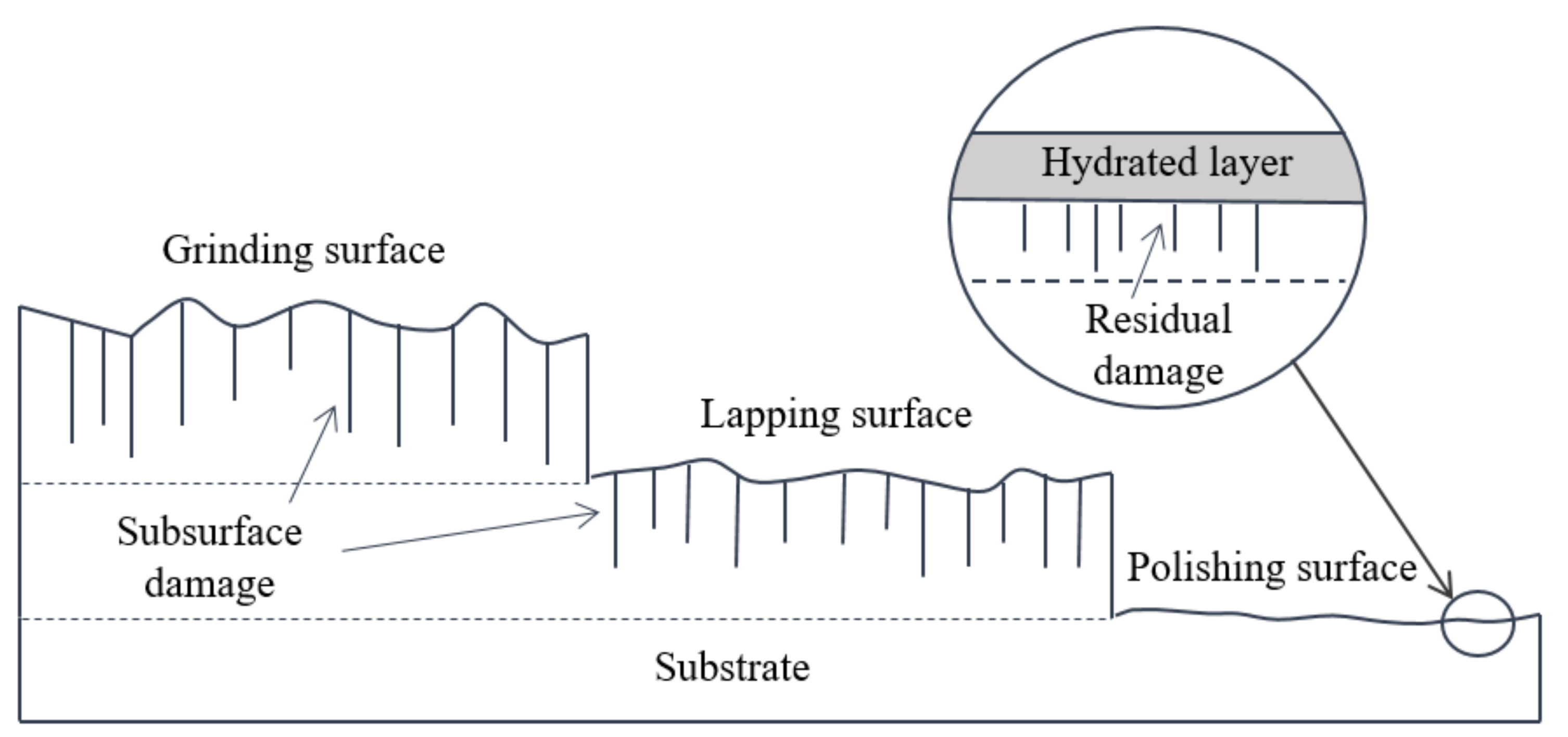

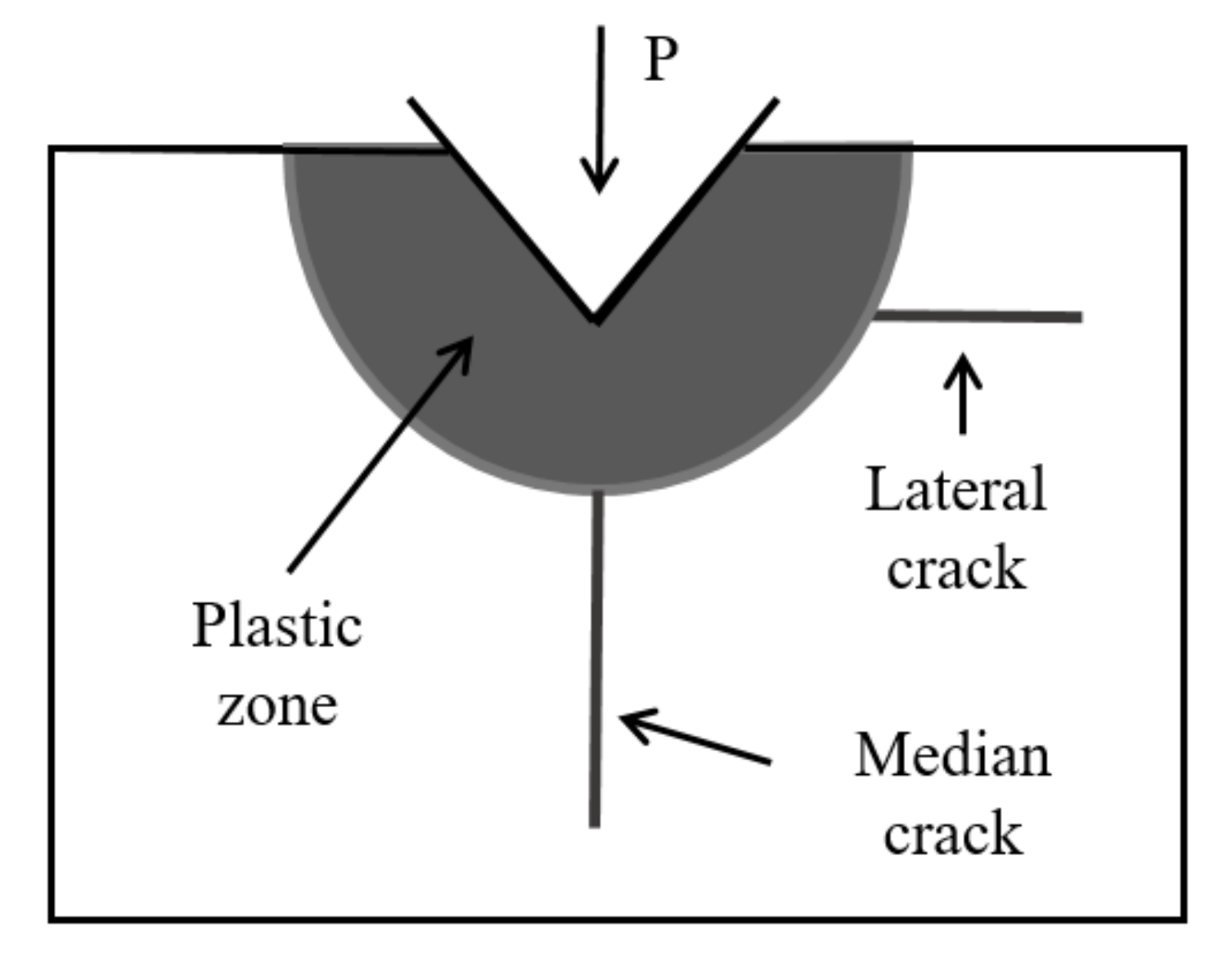
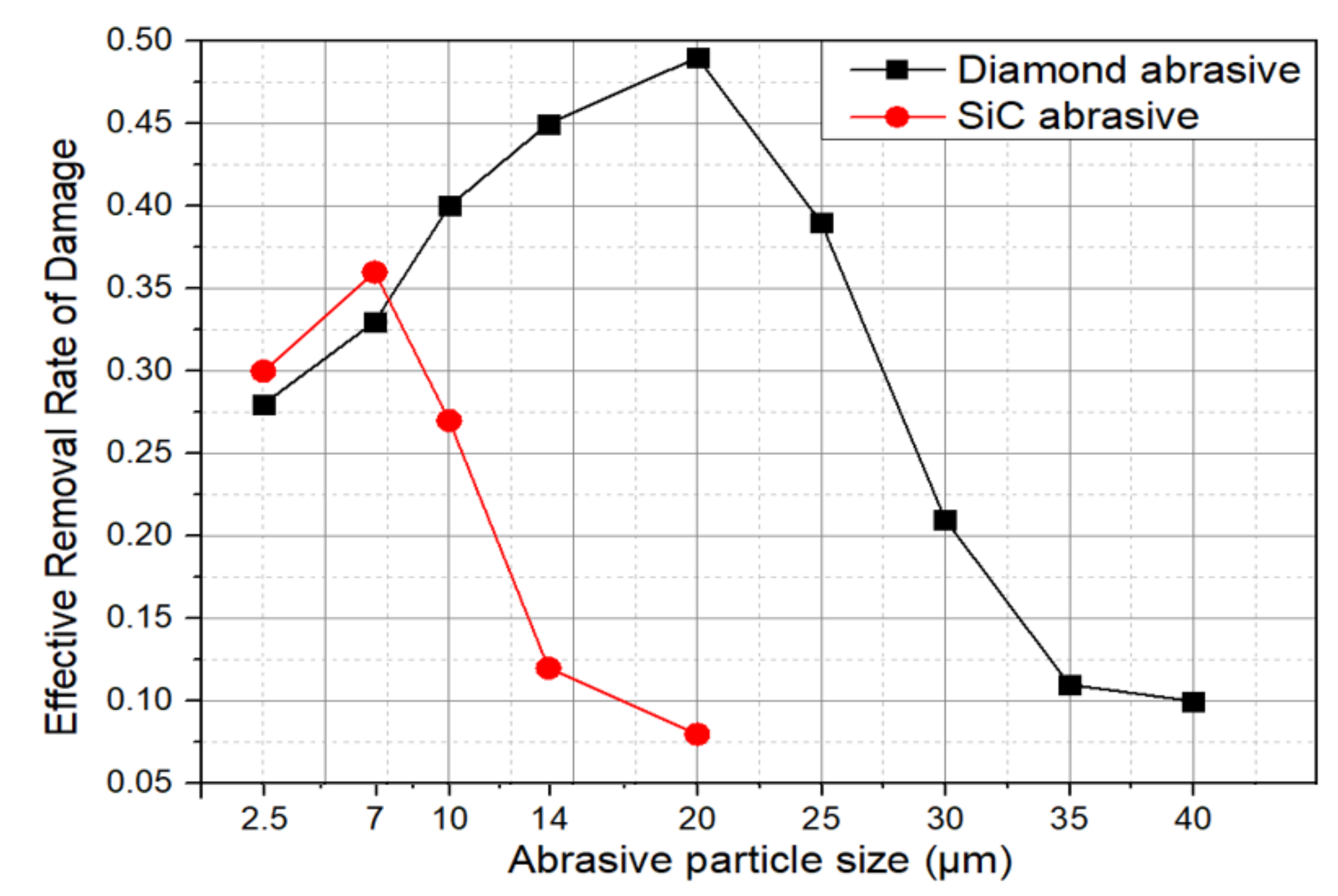
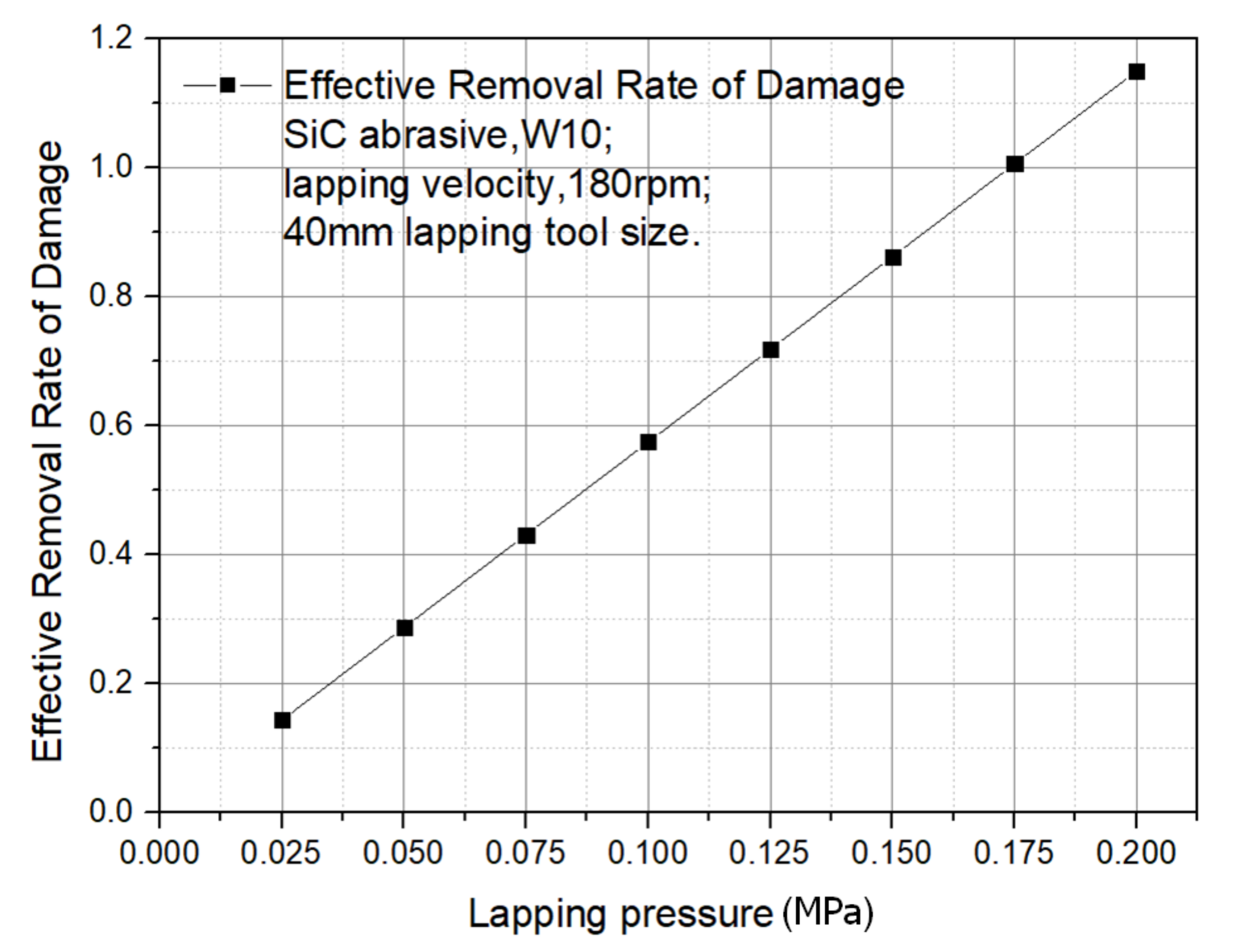

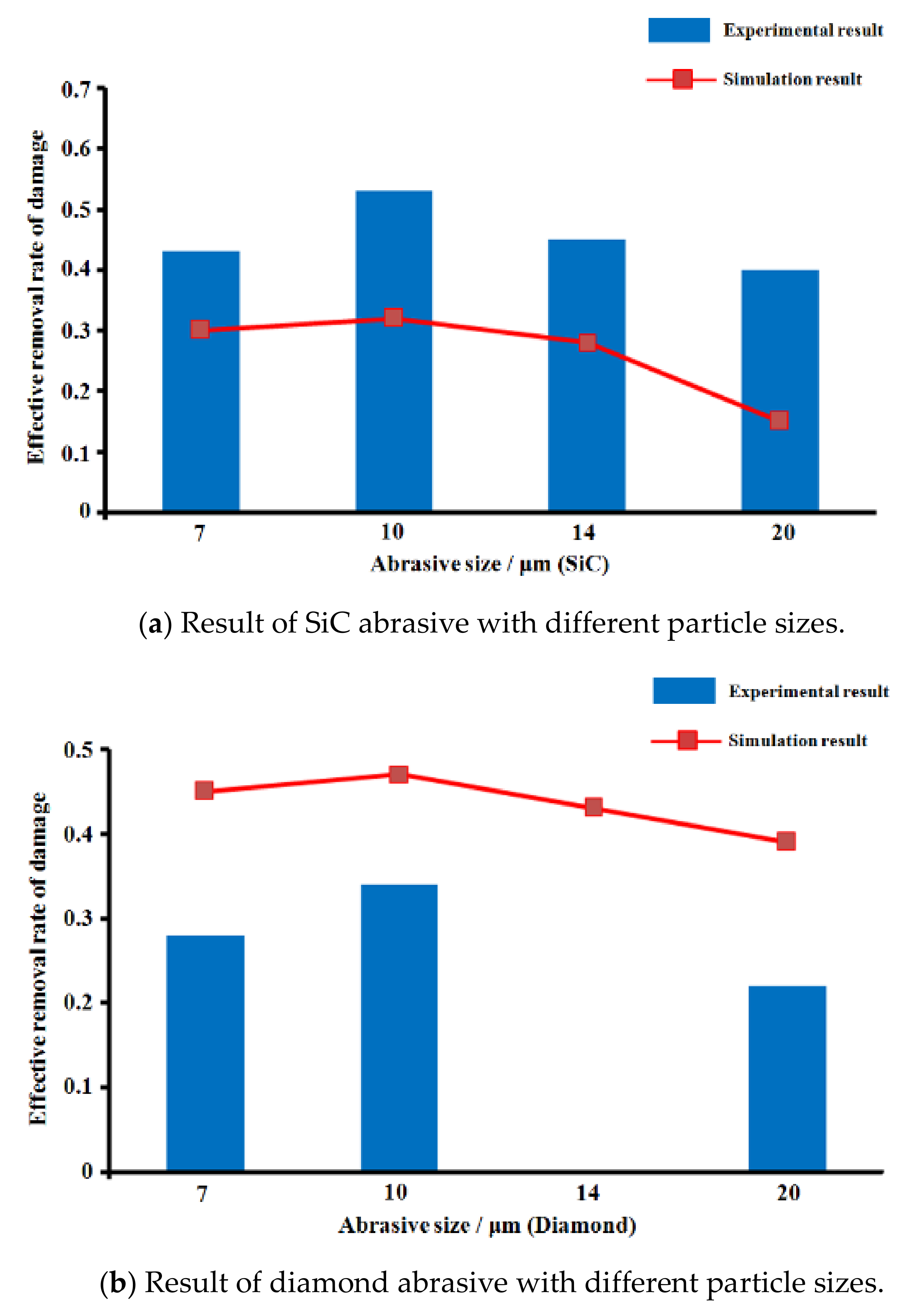
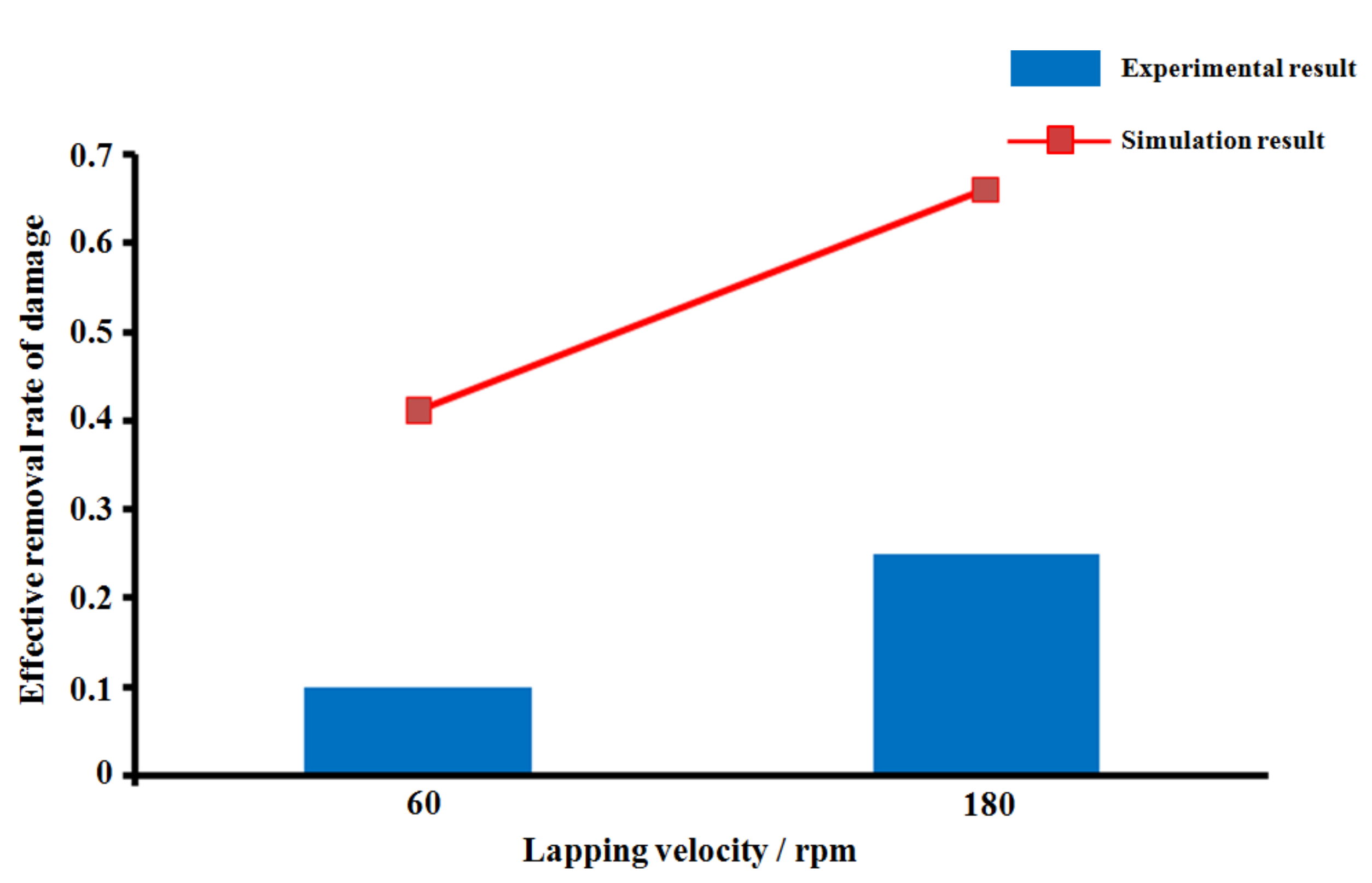




| Item | Conventional Lapping | Process A | Process B |
|---|---|---|---|
| Material removal amount | 250 μm | 250 μm | 250 μm |
| Abrasive | SiC | Diamond | SiC |
| Abrasive size | W20 | W20 | W7 |
| Pressure | 0.2 MPa | 0.2 MPa | 0.2 MPa |
| Velocity | 120 rpm | 180 rpm | 180 rpm |
| Item | Conventional Process | Process A | Process B |
|---|---|---|---|
| Lapping Time (h) | 9 | 2.5 | 5.3 |
| SSD depth (μm) | 18.76 | 40.14 | 6.83 |
| Item | Rough Lapping | Fine Lapping |
|---|---|---|
| Material removal amount | 200 μm | 50 μm |
| Abrasive | W20 Diamond | W7 SiC |
| Pressure | 0.2 MPa | 0.2 MPa |
| Velocity | 180 rpm | 180 rpm |
© 2020 by the authors. Licensee MDPI, Basel, Switzerland. This article is an open access article distributed under the terms and conditions of the Creative Commons Attribution (CC BY) license (http://creativecommons.org/licenses/by/4.0/).
Share and Cite
Song, C.; Shi, F.; Zhang, W.; Lin, Z.; Lin, Y. High-Efficiency and Low-Damage Lapping Process Optimization. Materials 2020, 13, 569. https://doi.org/10.3390/ma13030569
Song C, Shi F, Zhang W, Lin Z, Lin Y. High-Efficiency and Low-Damage Lapping Process Optimization. Materials. 2020; 13(3):569. https://doi.org/10.3390/ma13030569
Chicago/Turabian StyleSong, Ci, Feng Shi, Wanli Zhang, Zhifan Lin, and Yuxuan Lin. 2020. "High-Efficiency and Low-Damage Lapping Process Optimization" Materials 13, no. 3: 569. https://doi.org/10.3390/ma13030569





